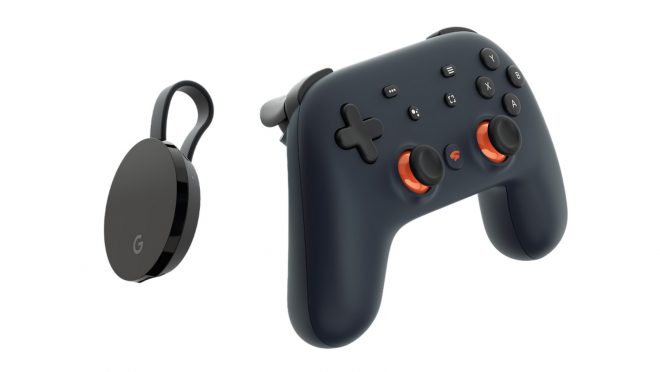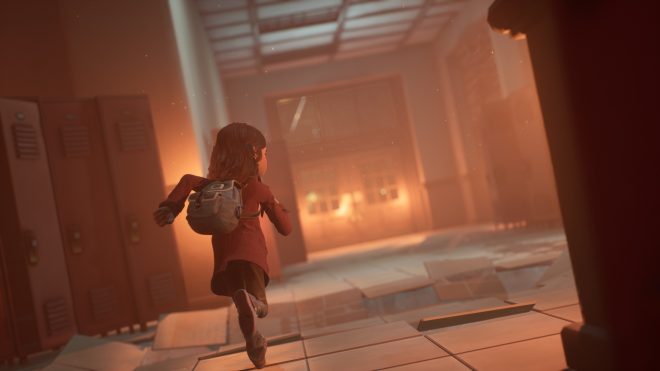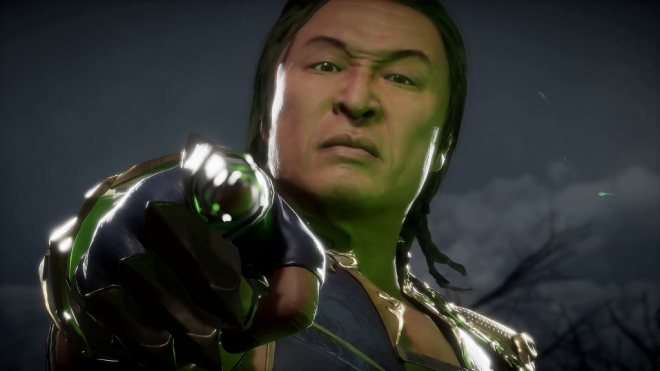Cognition Dissemination: Stadia Will Walk an Uncertain Path

This week’s Stadia Connect (get it?) was Google’s chance to put their best foot forward to show the Google Stadia streaming platform’s potential before the gaming and tech press gets buried in the E3 2019 media frenzy. It actually showed how Stadia will amount to walking on an ice sheet after launch.
Early Stadia subscribers will at least have several software options. Google showed several games that will be available at launch or shortly afterward and the publishers supporting it, including Assassin’s Creed Odyssey and Tom Clancy’s Ghost Recon Breakpoint from Ubisoft, the new Tomb Raider trilogy and Final Fantasy XV from Square Enix, and Borderlands 3 from Gearbox and 2K Games. The stream also started with the announcement of Baldur’s Gate III (also on PC), and featured the first exclusive with the Tequila Games-developed Gylt. But for as much as Google tried, the Stadia doesn’t project the feeling of a potential success yet for several reasons.
The lineup is fine for the launch window, but nothing that will pull anyone from current hardware, since nearly every game is multiplatform. For as good as it looks, they’ll need more than Gylt to convince audiences to invest in it. I’m not saying everyone Google’s targeting with Stadia owns a current-gen console or PC, but a good chunk of them absolutely use them, and the current software lineup won’t be enough to make them reliable subscribers yet.

The subscription prices are okay, but just that. Anyone who convinced themselves that this would be the Netflix-style answer to video gaming — and there were plenty — was bound to be disappointed. When Stadia launches on November 14th, it will only be available through the Founder’s Edition. This premium package will require a $130 investment for the initial three months, but will require a monthly $10 afterward. It will include a package-exclusive Night Blue Controller and a Chromecast Ultra to stream games to the TV.
The only game it will come with is Destiny 2: The Collection, a renamed version of the original Destiny 2 published by Bungie themselves with all the content released thus far. The game will also notably be free-to-play on other platforms soon. The feature that will allow for players to resume progress where they left off on other platforms thanks to cross-saving (yes, even if they played on PS4) is a nice one, though.
Other software will have to be purchased separately, like on competing platforms. Free games will be offered on a regular basis, similar to how they’re provided through PlayStation Plus and Xbox Live subscriptions. There’s no telling how expensive (or not) the starting prices for individual software will be, but special offers will be available for premium subscribers. The games should be cheaper, since anyone using the service will only be able to stream the games and not actually own them.
The free tier won’t arrive until sometime in 2020, which will support a small array of controllers and allow for anyone to play via the Chrome browser or Chromecast — if they own a controller and the device. There’s a good chance anyone who already owns a gaming controller already plays games on another platform, and again, there’s little incentive to switch just yet. The maximum resolution that can be achieved with the free subscription is 1080p, and the lack of free games means it will still require an initial investment, so it’s not actually “free.” It’s also a shame that any free games downloaded as part of the premium subscription can’t be kept if anyone downgrades to the free one.

There’s also the small issue of whether people’s internet connections can handle the games. It will require around 15Mbps to run games at 720p, 25Mbps for 1080p, and 35Mbps for 4K. That isn’t too demanding for anyone in an urban city in the United States, but it could be rough for several outside it. The US is an ISP-dominated hellhole with iffy connections all around, and millions upon millions of Americans don’t meet the 25Mbps threshold, particularly in rural territories. There’s no sign that this could change in the near future with an FCC that will do the opposite of holding ISPs to account.
The streaming quality outside people’s home connections could also be questionable if the YouTube stream for the Stadia Connect was a good indication. The video dropped all the way down to 240p a few times while I was watching, and there were no problems on my end. It’s easy to imagine that happening with Stadia, which will require more bandwidth.
There are enough “ifs” here to fill a mental warehouse with, along with a healthy mixture of “well, it depends” situations. It’s like, well, when a person walks over an ice sheet, not knowing if or when one could crack. It will do fine to start with thanks to its launch lineup featuring several new and recent third-party products, but Google will need to diversify its software output down the line with exclusives. Whether they’ll shell out the money for games bigger than Gylt, whose budget seems about on par with the developers’ previous game, Rime, remains to be seen.
I wish I could end this with a more definitive conclusion, but “uncertainty” is the key term here. We’ll see if Google can make its way across that streaming ice sheet, even if they stumble along the way.





